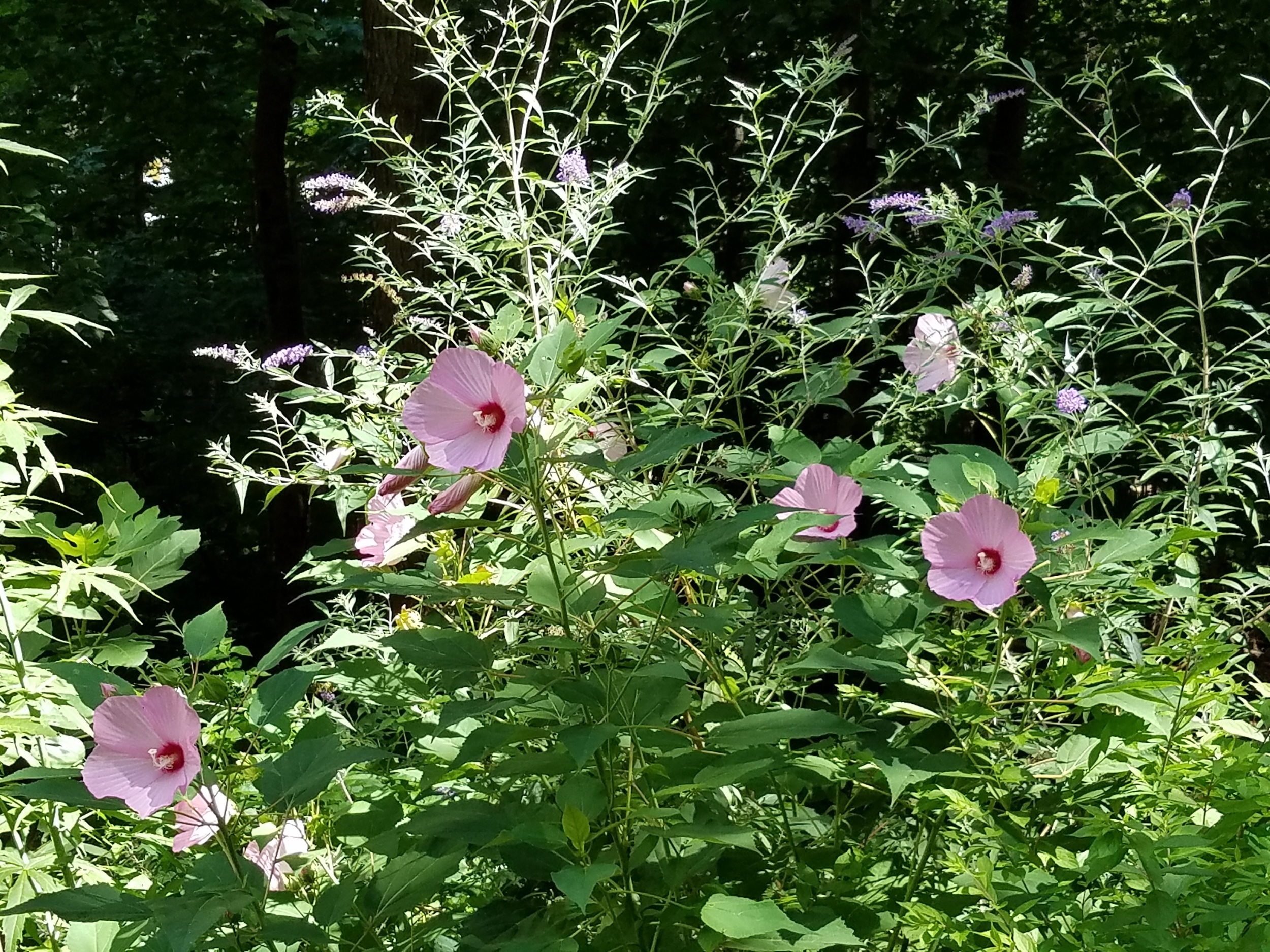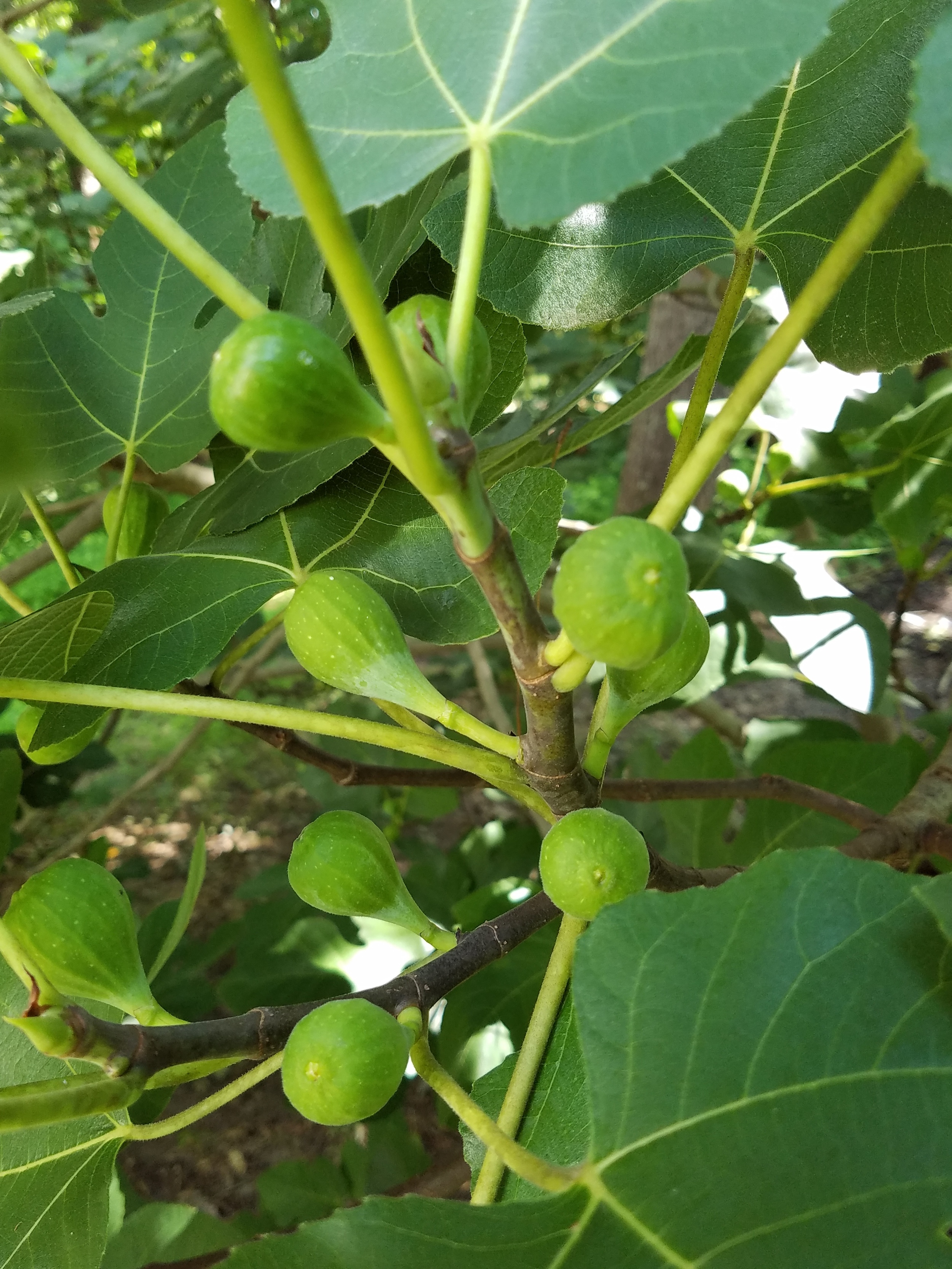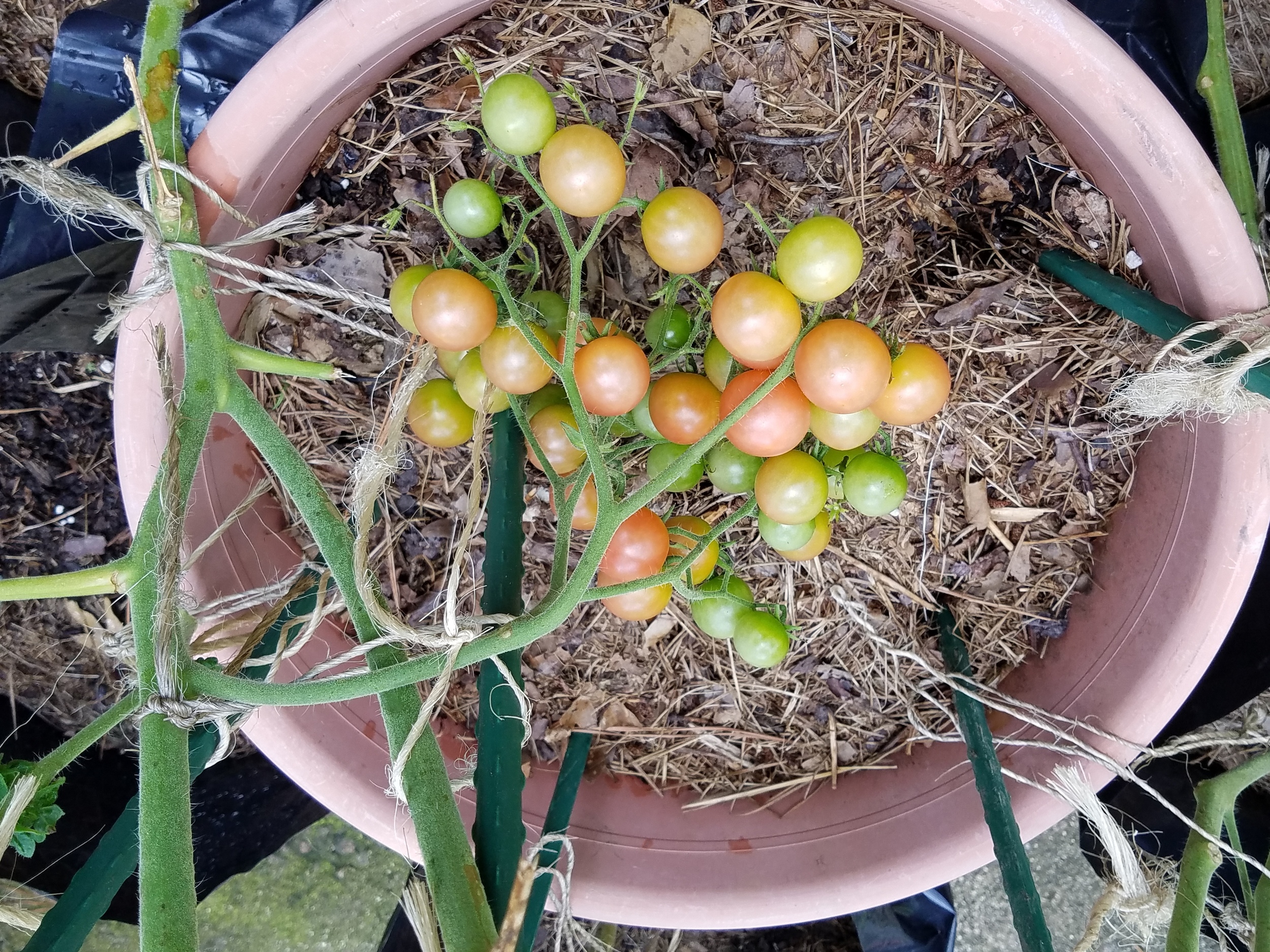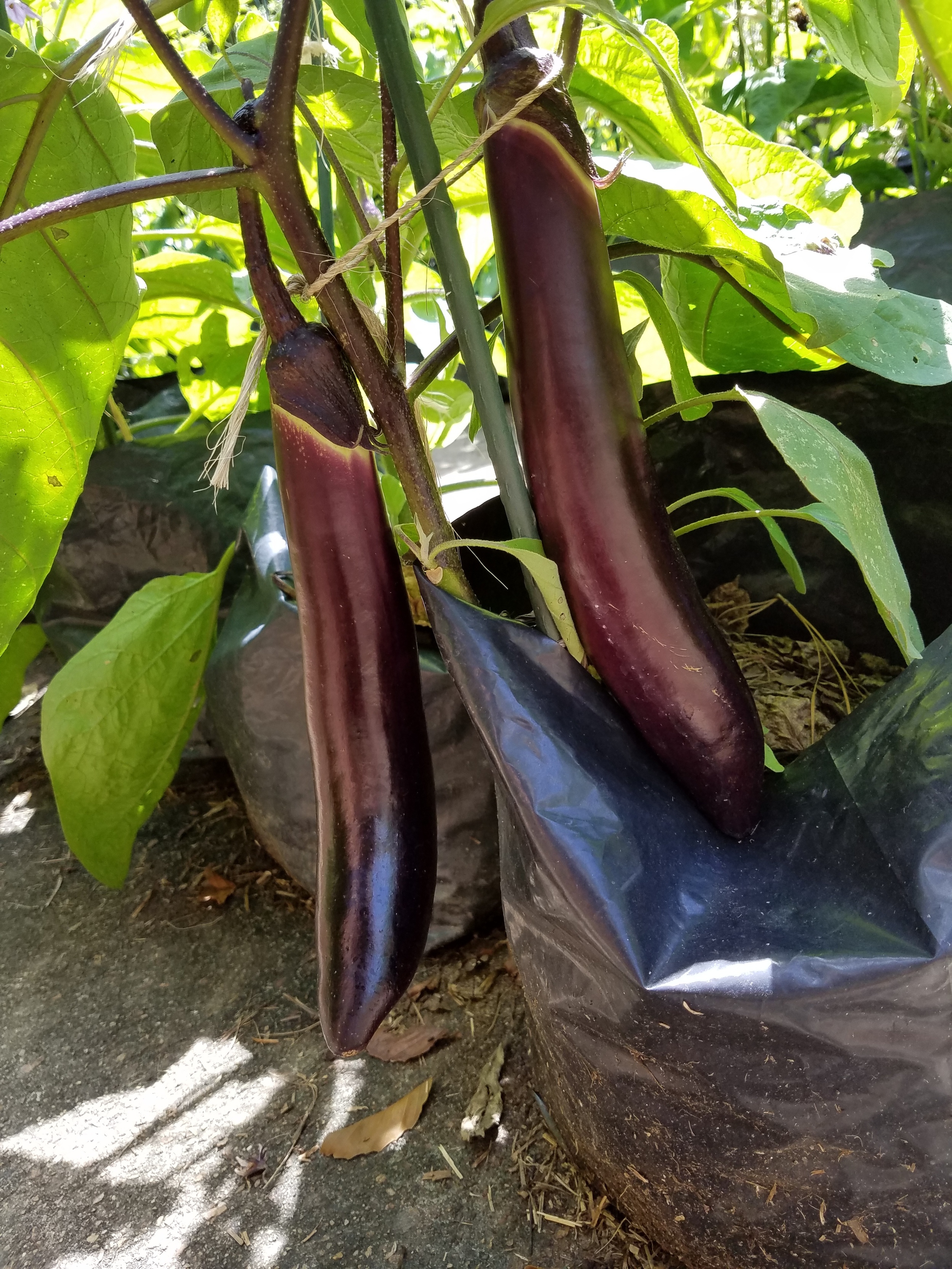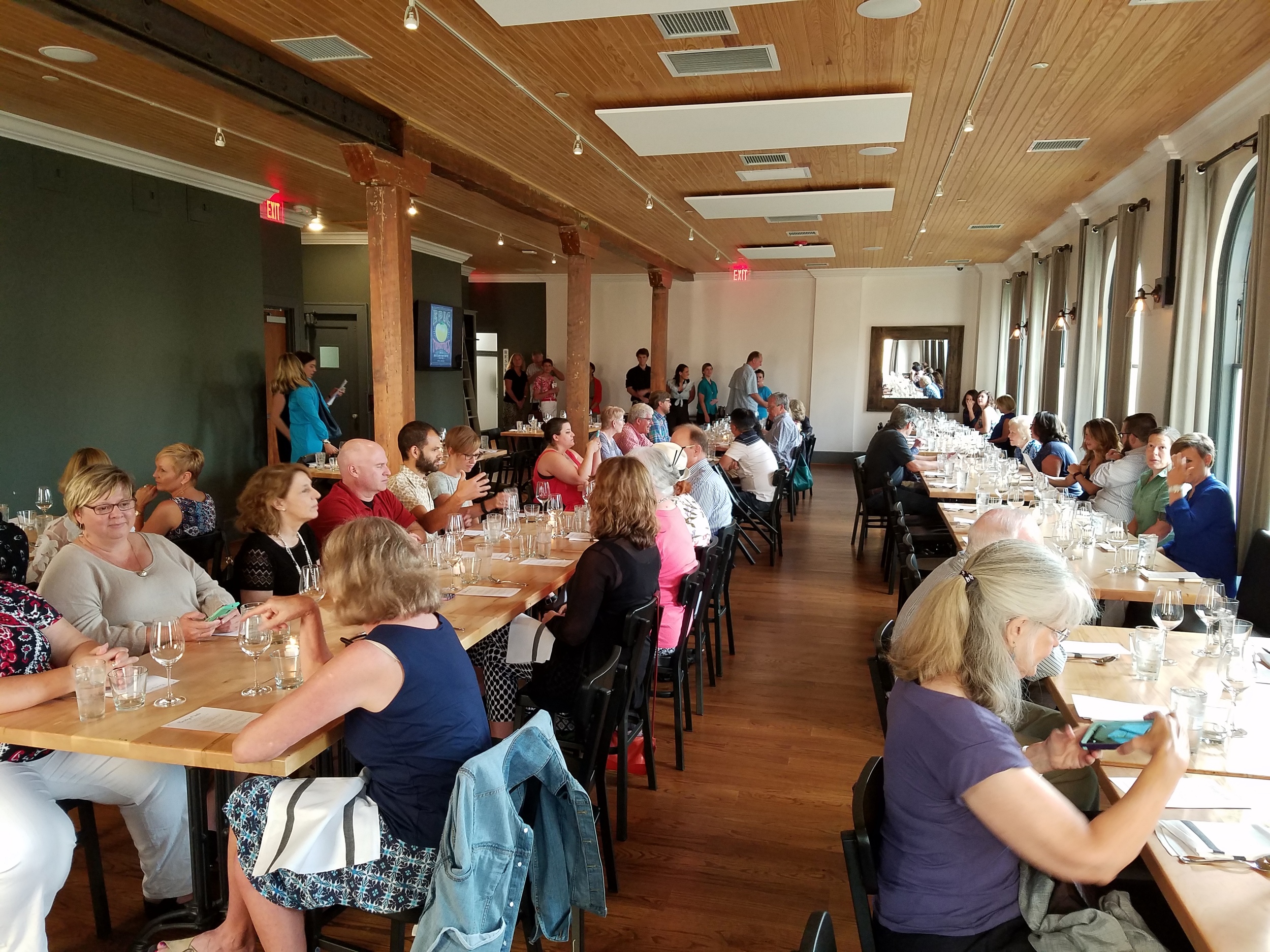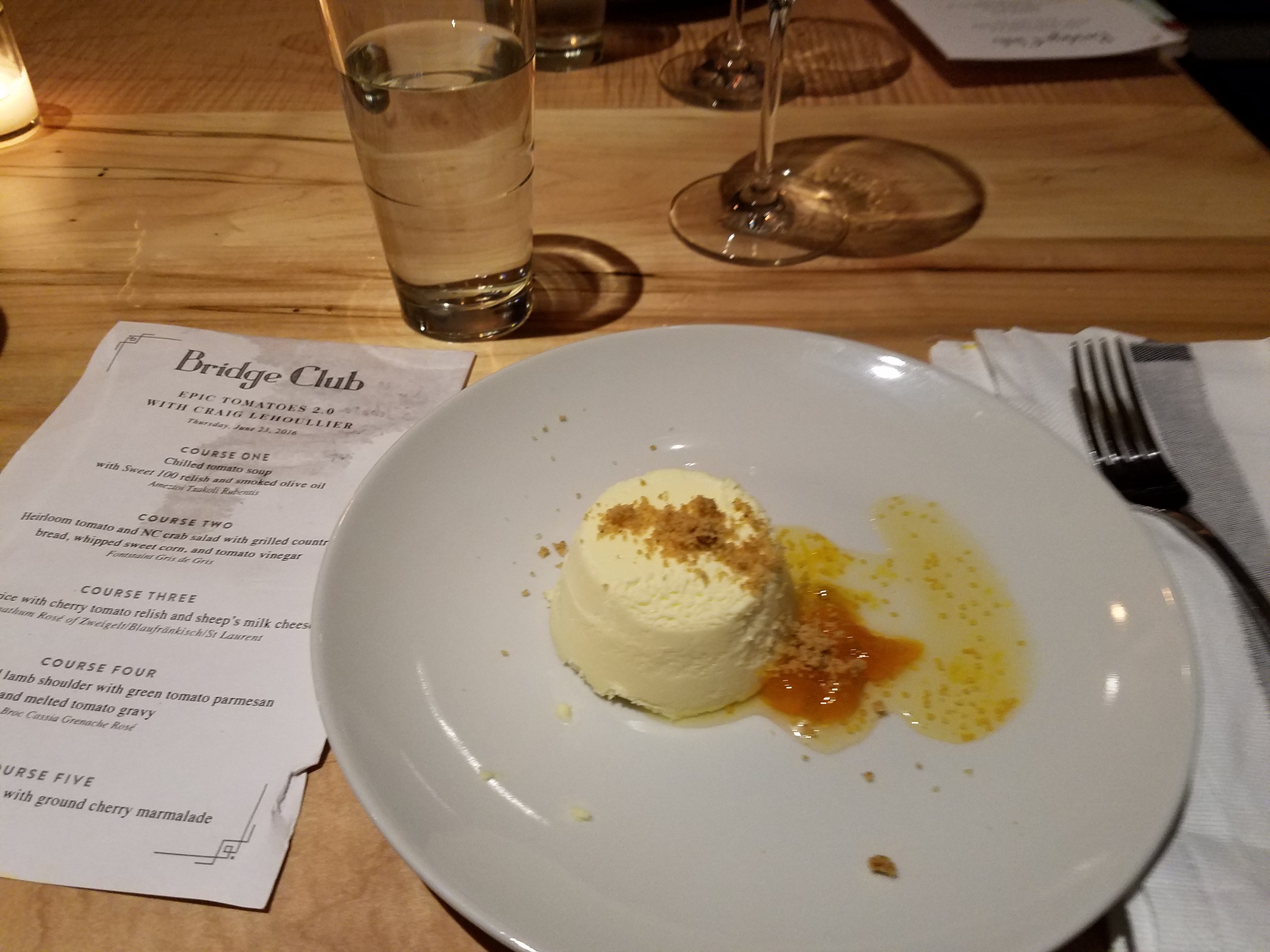August is well in view. How can it be? The summer that has been a blur (that began in spring) is proving to be a challenging one as far as successfully gardening. Or is it? Part of it is having reasonable expectations and acknowledgement of the original goals. This could be a long, long blog, but instead I will try to stick to a few major points and some nice pictures.
First - vacation! We hosted our daughter and her family - somehow, a near month is now in the rear view mirror, and wonderful memories are what remain from a big family vacation at the beach. We had such a nice time with Sara and Adam and Aaron and Aiden - joined by Caitlin and Patrick, and even Sara's friend Wendy.
Of course, the visit and vacation fell right in the middle of main garden harvest and maintenance time. Add to that constant extreme heat and humidity and lots of late day torrential downpours, and you get a challenging, complex season. Somehow, there is a bag of eggplant in the fridge, half a dozen cukes, a dining room table covered with tomatoes, and seeds dried and packaged from 140 varieties. Don't ask me how all of this is getting done. Sadly, there are also now a whole lot of diseased and/or dead tomato plants. But all of that is part of a more detailed story - that of what I hoped to accomplish...what was accomplished, and the reasons for the differences.
So the good - lots of varieties, fruit from all of my dwarf X indeterminate hybrids created last year, healthy eggplant and peppers, some delicious Cherokee Purple and Chocolate and Lucky Cross, and some great new family heirlooms (from Walt Swolka and the Maris family, particularly). Lots of seed saving completed - 140 varieties of tomatoes, and a few peppers and eggplant, including the weird eggplant Rio Market - shape and size of a fig, white seeds, ripens from deep green to nearly tomato red.
The bad - the plan was too ambitious, timing of the summer vacation wasn't taken into account, quite a few tomatoes will pass away prior to bearing fruit (I estimate that I will be missing about 30 varieties), challenging weather, lots of fungal diseases brought on by the weather, and some squirrel and deer attacks (particularly recently).
Much more on all of these points over the coming weeks and months.
Now for some garden pictures, including the current state of affairs. The last four pictures in the carousel below show the garden from today - including the healthy peppers and eggplant and the sad back bale row of toasted dwarfs.





















































